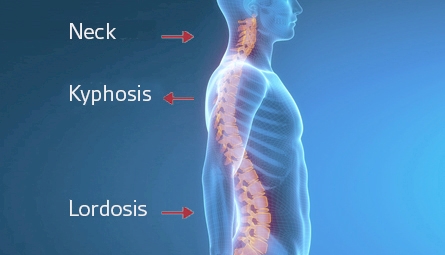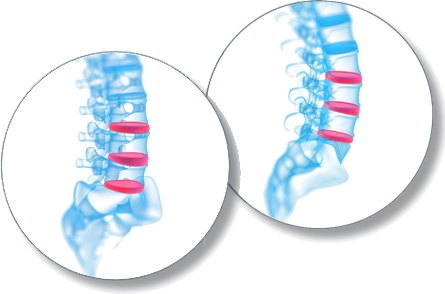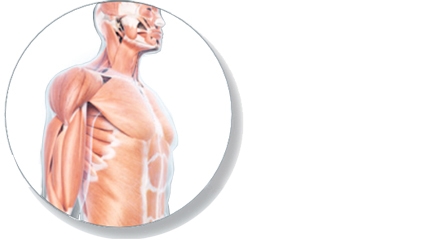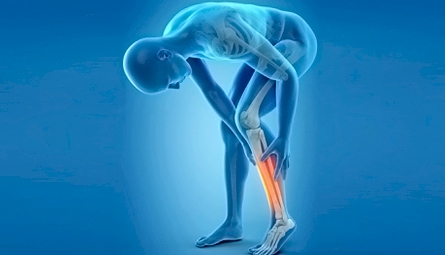
Find out more
How does the human body function?
23 % of all sick leaves in Germany are due to complaints in the musculoskeletal system. At least in the office, these are avoidable. Good office furniture takes into account the needs of the human body.
The passive locomotor system

The spine:
In an upright posture, the shape of the spine resembles a double 'S'. In the region of the lumbar vertebrae the spine curves inward (lordosis), in the region of the thoracic vertebrae it curves outward (kyphosis), and in the neck region it once again curves inward. The intervertebral disks are subjected to roughly equal pressure.

The intervertebral discs:
When the torso is moved, the ends of the vertebrae are pressed together, and the intervertebral disks in this region are compressed. This also happens when the individual is sitting without lumbar support or a backrest. The pelvis tips backward, and the result is a hunched back. The intervertebral disks must then sustain pressure that can be as high as 8.3 bar. By way of comparison, the pressure inside a car tyre is between 2.0 and 2.4 bar.


The crucial factors for human beings’ physical well-being include not only the absolute strain on the intervertebral discs but also how often the discs are moved. The provision of nutrients to the discs depends on the alternating compression and unburdening of the discs. Thus optimal working conditions require frequent changes of posture.

Office chairs should always have an ergonomically designed seat surface and a sufficiently high backrest with a lumbar support. A good swivelling office chair should also have a synchro mechanism that enables dynamic sitting and relaxed reclining.
You can find further criteria for the selection of office chairs in the chapter about office chairs.
The active locomotor system
The intervertebral discs and the muscles require movement. A static posture maintained over long periods of time causes muscle tension. That’s why it’s very important to plan as much variety and movement into your daily work as possible. Tried and tested methods include dynamic sitting and alternating between sitting and standing.


The back and abdominal muscles:
In the case of many office workers, the abdominal muscles are slack and the back muscles are stretched and stiffened. The only remedies for this situation are regular exercise and training.
Incidentally, the gastrointestinal tract also depends on the abdominal musculature.

The shoulder girdle: Almost half of all office workers suffer from pains in the neck and shoulder region. In most cases, this is due to muscle tension. There are many possible reasons for muscle tension, such as a cramped posture due to furniture that has not been adjusted to the user’s body measurements, glare or poor lighting, stress due to noise and constant interruptions, or simply insufficient movement.
Blood circulation
Long periods of sitting expose individuals to the risk of a congestion of blood in the legs. As a result, it’s very important to use the 'calf muscle pump'. This means alternately tensing and relaxing the calf muscles in order to vary the pressure on the blood vessels in the legs. This pumps the blood circulating in the legs back upward toward the heart. The 'calf muscle pump' works best when you’re walking, but even simply standing up or moving your legs while you’re sitting is helpful.


The rule of thumb for movement during office work is:

